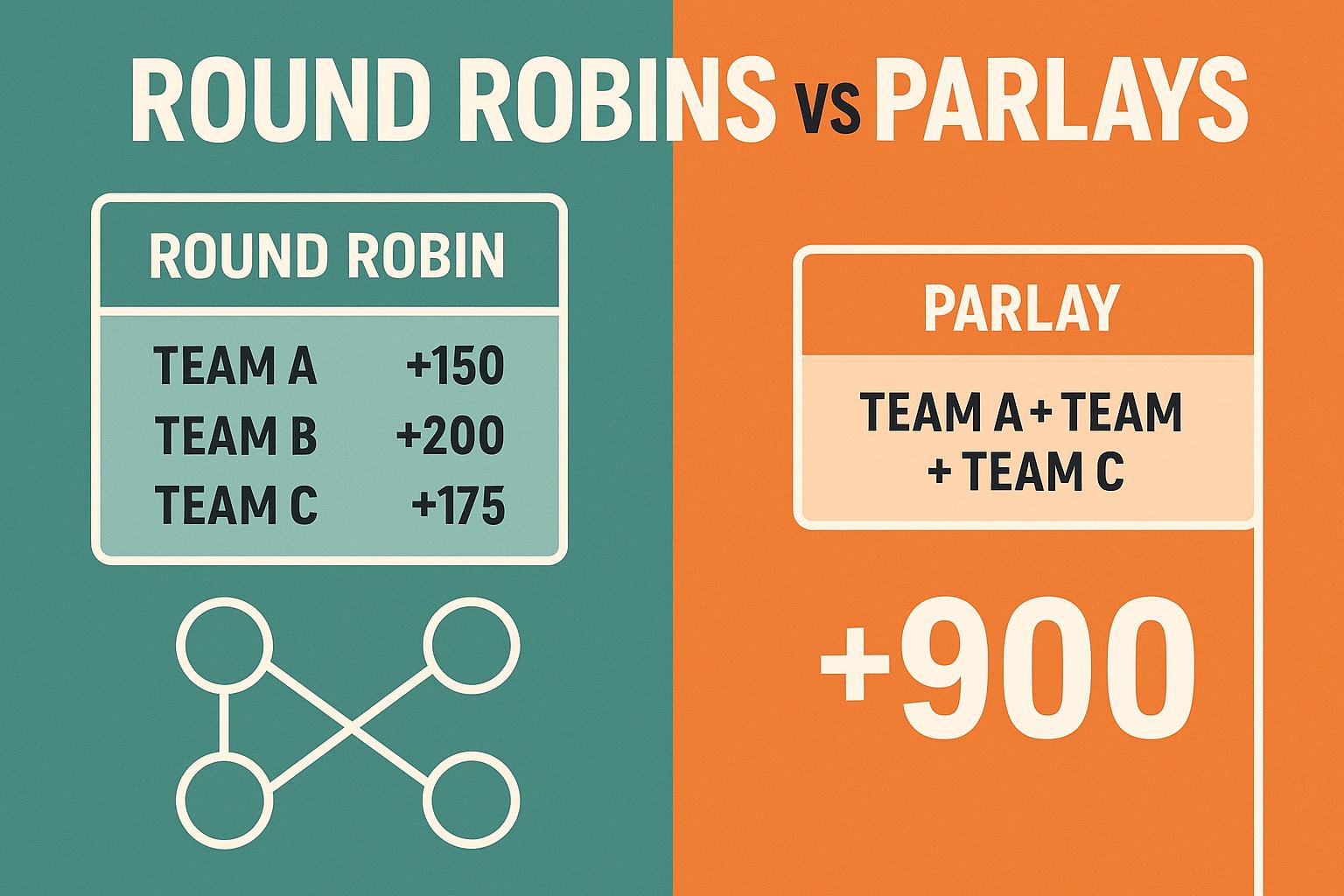The difference between round robins and parlays.

Understanding Round Robins and Parlays in Sports Betting
Sports betting continues to gain popularity, offering a range of options for bettors looking to add excitement to their sports viewing experience. Among the various betting methods available, round robins and parlays are two distinctive strategies that stand out, each with its unique approach to managing risk and reward. This article delves into the intricacies of these methods, examining how they are structured and the strategic considerations involved.
Parlays: A High-Risk, High-Reward Bet
Parlays are a favored choice among bettors due to their high-risk and high-reward potential. Basically, a parlay bet combines multiple individual wagers, known as legs, into a single bet. The key characteristic of a parlay is that all individual bets must win for the parlay to be successful. If even a single leg falters, the entire parlay bet collapses, resulting in a loss.
The allure of parlays lies in their promise of significant payouts. As more bets or legs are added to the parlay, the odds of winning each individual leg must align perfectly. This results in an exponential increase in the potential payout. The dynamic is simple: as the potential difficulty increases, so does the potential reward. This characteristic of parlays attracts both novice and experienced bettors who are willing to take on increased risk in the hope of significantly amplifying their returns.
However, it’s important to be aware of the inherent risk associated with parlays. Betting on an all-or-nothing outcome means that the margin for error is virtually nonexistent. It requires a perfect performance of all selections involved, and this factor increases the likelihood of failure. Despite this risk, the substantial potential for a large payout makes parlays a popular choice for bettors who thrive on the thrill of the game.
Round Robins: A Safer Alternative
Round robins offer a different approach, appealing to bettors who prefer a safer alternative without sacrificing the excitement of accumulating potential winnings. In contrast to parlays, round robins break down a group of selected bets into smaller combinations, effectively creating multiple parlay bets. Each of these smaller combinations consists of the bets and forms independent parlay bets within a single wager.
To illustrate, consider a scenario where a bettor selects three teams for their round robin bet. This selection results in three separate parlay combinations, limiting the risk exposure compared to a single, large parlay bet. Importantly, round robins offer greater flexibility as they allow bettors to win even if not all individual bets are successful. Partial success in one or more of these smaller parlays can still provide a payout.
The trade-off is that the overall potential payout of a round robin is generally lower than that of a single, larger parlay. However, the reduced risk and increased probability of winning at least some of the bets appeal to those who prefer a more balanced betting strategy. In essence, round robins provide a safety net, mitigating the impact of a single losing outcome and offering a more diversified approach to sports betting.
Key Differences Between Round Robins and Parlays
Understanding the key differences between round robins and parlays is essential for bettors to make informed decisions. The fundamental distinction lies in the risk-reward structure associated with each. Parlays represent an all-or-nothing approach, courting high risk for the possibility of a large payout. This appeals to bettors who have a high tolerance for risk and are confident in their predictions.
Conversely, round robins cater to those seeking a more secure betting approach. By creating multiple parlay combinations from a selected pool of bets, round robins reduce the loss potential. This approach appeals to those who prefer spreading their risk across various outcomes, thus balancing the potential for winning with a more conservative risk profile.
Choosing the Right Option
Choosing between a round robin and a parlay ultimately requires a careful consideration of personal betting strategies and risk tolerance. Those who enjoy the thrill of high stakes and are confident in their forecasting abilities might gravitate towards parlays. The allure of a high reward for accurately predicting multiple outcomes can be appealing to those comfortable with the associated risks.
Alternatively, bettors seeking a more controlled approach might find comfort in the structure of round robins. This method allows for flexibility and mitigates the possibility of losing the entire stake due to a single unsuccessful bet. It provides a pathway to achieve more consistent returns and suits those who prefer a steadier trajectory in their betting endeavors.
In sports betting, it is crucial to understand the nuances and mechanics of different bet types. Being informed allows bettors to strategize effectively and align their wagering practices with individual preferences and risk tolerance. For further exploration of sports betting strategies and insights, helpful resources such as BettingExpert and Sports Betting Dime offer valuable information to enhance a bettor’s understanding and approach.
Conclusion
Sports betting encompasses a wide range of strategies, with round robins and parlays representing two prominent methods by which bettors can engage with their favorite sports. Each option offers unique advantages and challenges, reflecting the varying appetites for risk and potential rewards among bettors. By understanding the distinctions and intricacies of these bet types, sports enthusiasts can make more informed decisions, enhancing both their enjoyment and engagement with the thrilling world of sports betting.
